Welcome to the world of water sports and fitness, where the shimmering waves become your playground and your health’s best ally. In this article, we’ll embark on a journey through the tranquil waters of paddleboarding, the thrilling currents of kayaking, and the refreshing embrace of swimming to discover how these aquatic activities can transform your well-being.
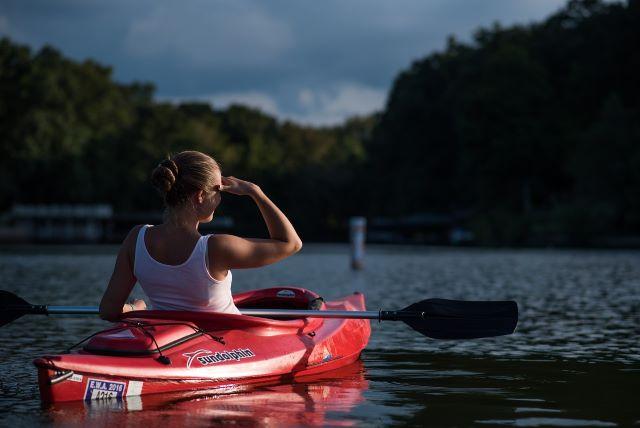
From enhancing your cardiovascular health to building strength and balance, the benefits of water sports are as vast as the open sea. Whether you’re a seasoned water enthusiast or a newcomer to the aquatic realm, get ready to dive into the world of paddleboarding, kayaking, and swimming, and unlock the secrets to a healthier, more vibrant you.
Say goodbye to the monotony of traditional workouts and hello to the invigorating embrace of water sports that can revolutionize your fitness journey.
Enjoy Yourself while Getting Healthier
As you immerse yourself in the world of paddleboarding, kayaking, and swimming, you’ll quickly realize that exercise can be an enjoyable adventure. These water sports offer a unique blend of fitness and fun, making it easier than ever to stay active while reveling in the beauty of the aquatic environment.
Whether you’re gliding serenely across a calm lake, conquering challenging rapids, or swimming in the soothing embrace of the ocean, the sheer enjoyment of these activities will keep you coming back for more.

But there’s more to this aquatic escapade than just a good time. You’ll also discover how these water sports can significantly improve your overall health. From toning muscles and enhancing flexibility to reducing stress and boosting mental well-being, the rewards of engaging in paddleboarding, kayaking, and swimming are immeasurable.
So, whether you’re seeking an exhilarating workout or a peaceful retreat on the water, join us as we explore the myriad ways in which these water sports can help you achieve your fitness goals while having the time of your life. It’s time to combine the thrill of adventure with the pursuit of a healthier you.
Stand Up Paddleboarding (SUP)
Benefits for cardiovascular health
Paddleboarding isn’t just about fun on the water; it’s also a great cardiovascular workout. As you paddle, you engage multiple muscle groups, elevating your heart rate and improving your cardiovascular endurance.

Beyond the physical benefits, paddleboarding in serene waters also provides stress relief, reducing the risk of heart-related issues. It’s a perfect blend of exercise and relaxation, making it an enjoyable way to boost your heart health.
Core strength and balance improvement
Paddleboarding isn’t just about having fun on the water; it’s also a fantastic way to enhance your core strength and balance. Standing or kneeling on the board challenges your core muscles, helping to improve stability and balance.
This full-body workout not only strengthens your core but also enhances your overall coordination and control. So, while you’re enjoying the beauty of the water, you’re also sculpting a stronger, more balanced physique.
Mental health benefits
Paddleboarding isn’t just a physical workout; it’s a soothing balm for your mental well-being. The tranquil waters and the rhythmic motion of paddling create a peaceful, stress-reducing environment. This can help alleviate anxiety, reduce stress levels, and boost your overall mental health.
As you paddle, you can find serenity in the beauty of nature, making it a refreshing and calming experience for your mind.
Kayaking
Upper body workout and muscle strengthening
Kayaking is more than a thrilling water adventure; it’s a superb upper-body workout that builds strength and muscle. Paddling through the water engages your arms, shoulders, and back muscles, providing an excellent resistance workout.
This helps tone and strengthen your upper body, enhancing your overall muscle definition. So, as you navigate the waterways, you’re also sculpting a stronger and more muscular physique.
Improvement in endurance and stamina
Kayaking isn’t just a thrilling water sport; it’s a powerful endurance and stamina builder. The repetitive motion of paddling over an extended period challenges your cardiovascular system, gradually improving your endurance. As you continue kayaking regularly, you’ll notice increased stamina, allowing you to paddle longer distances with ease.
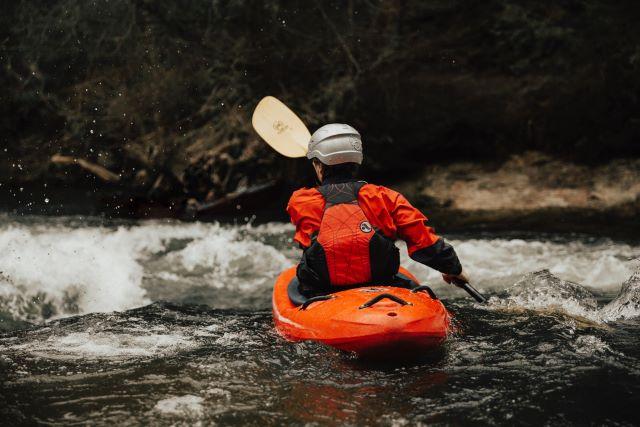
This enhanced endurance not only boosts your kayaking performance but also benefits your overall fitness and daily activities.
Stress relief and relaxation
Kayaking isn’t just about conquering the water; it’s also a therapeutic escape that offers stress relief and relaxation. The rhythmic motion of paddling and the tranquil waters create a soothing environment that helps reduce stress and promotes relaxation.
As you glide on the water, you can immerse yourself in the serenity of nature, leaving behind the worries of daily life. This mental rejuvenation makes kayaking a wonderful way to unwind and find tranquility while indulging in an exciting water adventure.
Swimming
Full-body workout and muscle toning
Swimming isn’t just a refreshing dip; it’s a full-body workout that tones and strengthens your muscles. When you swim, virtually every muscle group in your body gets involved. Your arms, legs, core, and back all work together to propel you through the water.
This comprehensive exercise not only builds muscle but also enhances muscle tone, leaving you with a more sculpted physique. So, as you enjoy the water, you’re also giving your body a fantastic workout that targets all major muscle groups.
Improved lung capacity and cardiovascular health
Swimming offers more than a refreshing plunge; it’s a superb way to boost your lung capacity and cardiovascular health. The controlled breathing required while swimming enhances your lung function and capacity. It also increases your heart rate, providing an excellent cardiovascular workout.

Over time, regular swimming can improve your lung capacity and overall cardiovascular health, leading to better endurance and stamina. So, while you enjoy the water, you’re also enhancing your respiratory and cardiovascular systems for a healthier you.
Low-impact exercise and injury prevention
Swimming isn’t just a fun water activity; it’s a low-impact exercise that can help prevent injuries. The buoyancy of water reduces the impact on your joints, making swimming gentle on your body. It’s particularly beneficial if you have joint issues or are recovering from an injury.
Swimming also helps improve flexibility and range of motion, reducing the risk of musculoskeletal problems. By incorporating swimming into your fitness routine, you can enjoy a safer, injury-free workout that contributes to your overall health and well-being.
Comparison of water sports
Calorie burning potential
When it comes to burning calories, different water sports offer varying potentials. Paddleboarding, with its full-body engagement, can burn a significant number of calories, especially when done at a moderate to vigorous pace. Kayaking also provides an excellent calorie burn, particularly in rougher waters or during intense paddling.
Swimming, being a whole-body workout, is highly effective at calorie burning, depending on your intensity and stroke choice. The continuous motion and resistance of the water make it a calorie-torching activity.

In comparing these water sports, the actual calorie burn will vary based on factors like intensity, duration, and individual fitness levels. However, what’s consistent across all these activities is that they offer not only calorie burning but also a multitude of other health benefits.
So, whether you choose paddleboarding, kayaking, or swimming, you’re not only shedding calories but also improving your overall fitness and well-being.
Impact on different muscle groups
Different water sports have varying impacts on muscle groups:
- Paddleboarding: Paddleboarding engages multiple muscle groups simultaneously. It challenges your core, legs, and back as you balance and paddle, and it also works your arms and shoulders. It’s an excellent full-body workout.
- Kayaking: Kayaking primarily targets the upper body, particularly the arms, shoulders, and back. The continuous paddling motion strengthens these muscle groups. Core engagement is also essential for stability and balance.
- Swimming: Swimming is a comprehensive full-body workout that engages nearly every muscle group. It works your arms, shoulders, back, chest, and legs as you move through the water. The core is actively involved in maintaining proper body alignment and buoyancy.
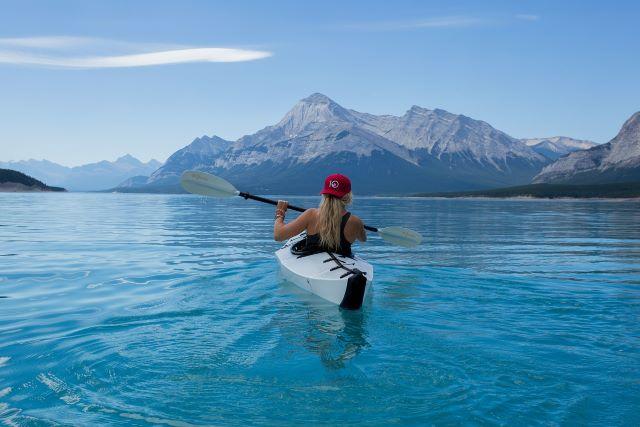
Each of these water sports offers unique benefits for muscle development. Depending on your fitness goals and preferences, you can choose the one that aligns with your specific muscle-toning objectives.
Accessibility and equipment requirements
When it comes to accessibility and equipment requirements, here’s a comparison of these water sports:
- Paddleboarding: Paddleboarding is highly accessible, requiring minimal equipment. All you need is a paddleboard and a paddle. It can be done on calm lakes, rivers, or coastal waters, making it versatile and accessible for many locations.
- Kayaking: Kayaking also has relatively low equipment requirements. You’ll need a kayak, a paddle, and safety gear like a life jacket. It’s accessible on various water bodies, including lakes, rivers, and oceans, but it may require more specialized equipment for different types of kayaking (e.g., sea kayaking or white-water kayaking).
- Swimming: Swimming is perhaps the most accessible water sport as it only requires a swimsuit and access to a pool, lake, river, or ocean. Safety gear like goggles and a swim cap may enhance the experience but are not always necessary.
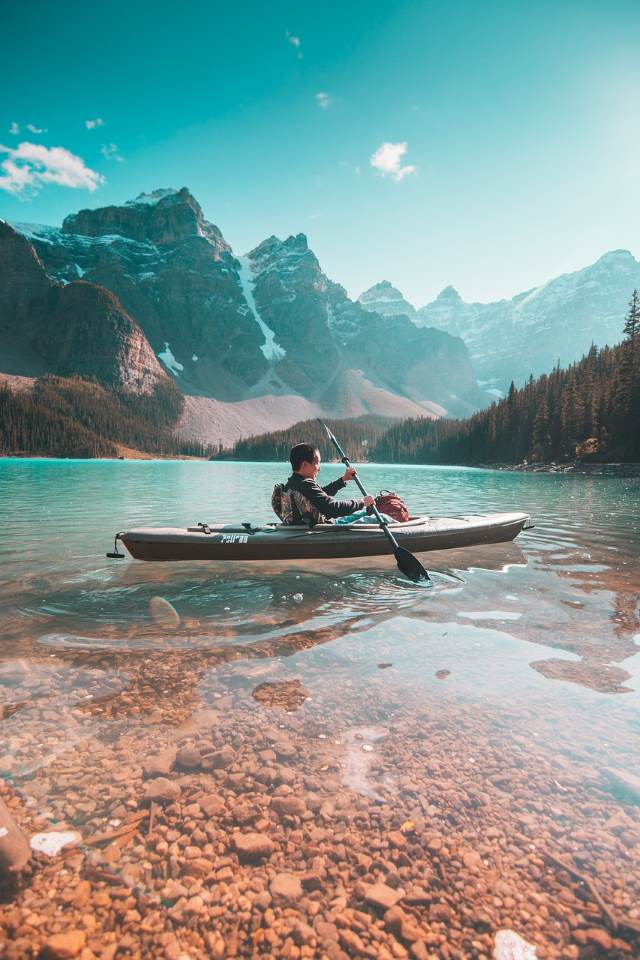
Overall, paddleboarding and swimming are often the most accessible for beginners due to their minimal equipment requirements and the ease of finding suitable locations. Kayaking may require slightly more investment in equipment and may be best suited for those with access to appropriate water bodies.
Safety considerations
Importance of proper equipment and gear
Safety should always be a top priority in water sports, and the importance of proper equipment and gear cannot be overstated:
- Paddleboarding: While paddleboarding is generally safe, wearing a personal flotation device (PFD) is advisable, especially in open water or when you’re less experienced. A leash connecting you to the board can also be crucial, as it prevents the board from drifting away if you fall. Sun protection, such as sunscreen and a hat, is essential for extended sessions in sunny conditions.
- Kayaking: Kayaking requires a PFD for safety, as well as a well-fitted spray skirt in rough waters to prevent water from entering the kayak. A helmet is recommended for white-water kayaking to protect against head injuries. Learning how to perform wet exits and self-rescue techniques is crucial.
- Swimming: In swimming, it’s vital to be aware of water conditions, especially in open water. Always swim in designated areas with lifeguards when possible. Use goggles to protect your eyes, and consider wearing a swim cap for increased visibility. Pay attention to weather conditions and water temperature, and avoid swimming alone in remote areas.
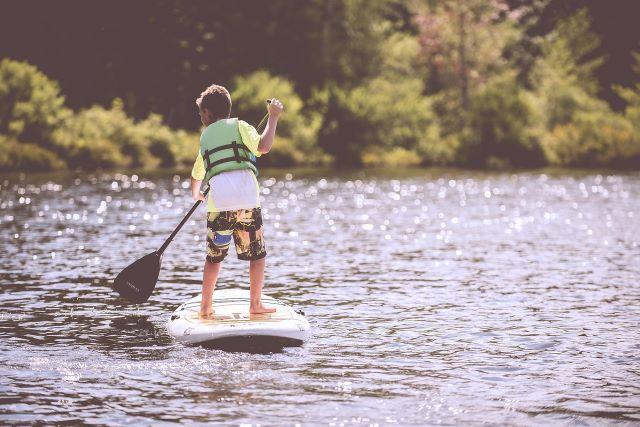
Proper equipment and gear can make a significant difference in your safety and overall enjoyment of these water sports. It’s essential to familiarize yourself with the specific safety requirements and guidelines for each activity and to follow them diligently to ensure a safe and enjoyable experience on the water.
Understanding water conditions and currents
Understanding water conditions and currents is vital for safety in water sports:
- Paddleboarding: Paddleboarders should be aware of wind conditions and how they can affect the water. Paddling against the wind can be challenging, so it’s essential to know the forecast and plan your route accordingly. Calm, flatwater conditions are ideal for beginners, while choppy or turbulent waters may be better suited for experienced paddleboarders.
- Kayaking: Kayakers should have a good understanding of river or ocean currents, tides, and wind patterns. Strong currents can affect your ability to paddle or control your kayak, and tides can significantly impact coastal kayaking. Always check the weather and water conditions before heading out and adjust your plans accordingly.
- Swimming: Swimmers must be aware of water conditions, including waves, currents, and water temperature. Swimming against a strong current can be exhausting and potentially dangerous, so it’s crucial to swim parallel to the shore if caught in a rip current. Always choose swimming locations that are safe and suitable for your skill level.
In all cases, it’s essential to have a basic understanding of water conditions and currents to make informed decisions about when and where to engage in these water sports. Paying attention to weather forecasts and local advisories can help you stay safe and enjoy your time on the water to the fullest.
Getting started with water sports
Finding local water bodies and facilities
Starting your water sports journey involves discovering local water bodies and facilities that suit your chosen activity.
For paddleboarding, seek out calm lakes, ponds, or gentle rivers. Parks and recreational areas often provide paddleboard rentals and introductory lessons, making it accessible for beginners.
If kayaking piques your interest, look for nearby lakes, rivers, or coastal areas. Check for local kayaking clubs or rental providers that offer beginner lessons to build your skills.
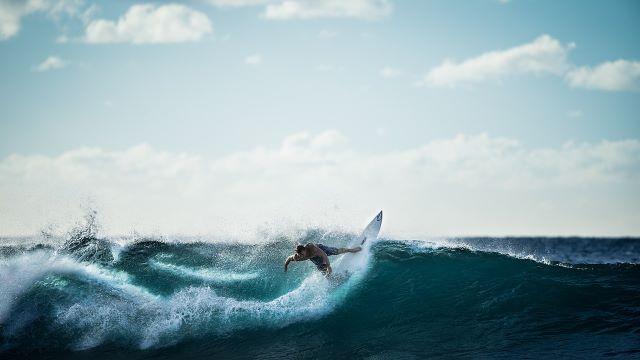
Swimming can be enjoyed in various settings. Visit local swimming pools for lessons and practice or explore designated swim areas at monitored beaches. Consider joining a local swimming group or club for guidance and support as you start your aquatic adventure.
Ensure safety by adhering to local regulations and guidelines. Connecting with local water sports enthusiasts or clubs can provide valuable insights to make your beginning both enjoyable and secure.
Taking lessons or joining clubs
Enhancing your water sports skills often involves taking lessons or becoming part of clubs:
- For paddleboarding, consider enrolling in lessons offered by local rental shops or paddleboard enthusiasts. These sessions can teach you the basics and boost your confidence.
- If kayaking is your passion, look for kayaking clubs or instructors who provide lessons tailored to your skill level. Joining a club can foster camaraderie and help you refine your techniques.
- When it comes to swimming, local swimming pools and aquatic centers often offer lessons for all ages and abilities. Additionally, joining a swimming group or club can provide coaching, motivation, and a sense of community to support your progress.
By taking lessons or joining clubs, you can accelerate your learning curve and enjoy the guidance of experienced enthusiasts in your chosen water sport.
Renting or purchasing equipment
Equipping yourself for water sports can involve either renting or purchasing the necessary gear:
For paddleboarding, start by renting boards and paddles from local rental shops or water sports centers. As you gain confidence and commitment, consider investing in your equipment, ensuring it suits your preferences and needs.
Kayaking enthusiasts can begin by renting kayaks and paddles from outdoor outfitters. As your experience grows, you might choose to purchase your kayak, customized to your kayaking style and proficiency.
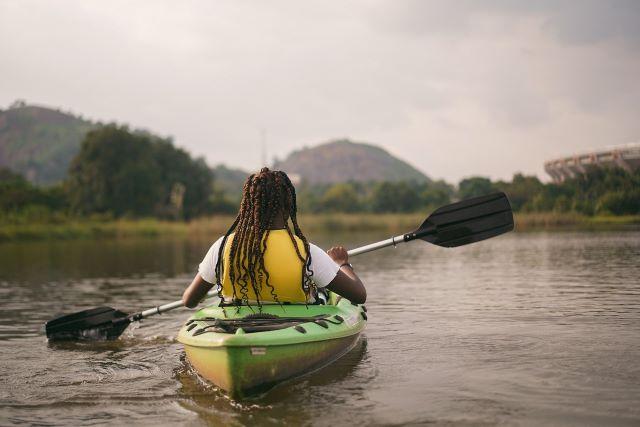
Swimming requires minimal equipment, primarily a well-fitted swimsuit and swim goggles. Additional gear such as swim caps or training aids can be considered based on your goals and preferences.
Renting initially allows you to explore different equipment options and gauge your commitment to the sport. When you’re confident in your choice, investing in your gear can enhance your experience and performance in your chosen water sport.
Final Thoughts
Embracing water sports like paddleboarding, kayaking, and swimming offers not only exciting adventures but also a multitude of physical and mental health benefits. These activities can transform your fitness journey into an enjoyable and refreshing experience. Whether you’re navigating serene waters, conquering challenging currents, or diving into the pool, water sports provide a unique blend of exercise, relaxation, and camaraderie.
As you embark on your aquatic journey, remember to prioritize safety, follow local guidelines, and seek lessons or clubs to refine your skills. Whether you’re renting equipment or investing in your gear, tailor your choices to your preferences and commitment level.
Ultimately, water sports invite you to explore the beauty of aquatic environments while enhancing your physical well-being, building strength, and fostering mental relaxation. So, dive in, paddle out, and enjoy the incredible benefits of these water-based activities that can transform your health and enrich your life.









